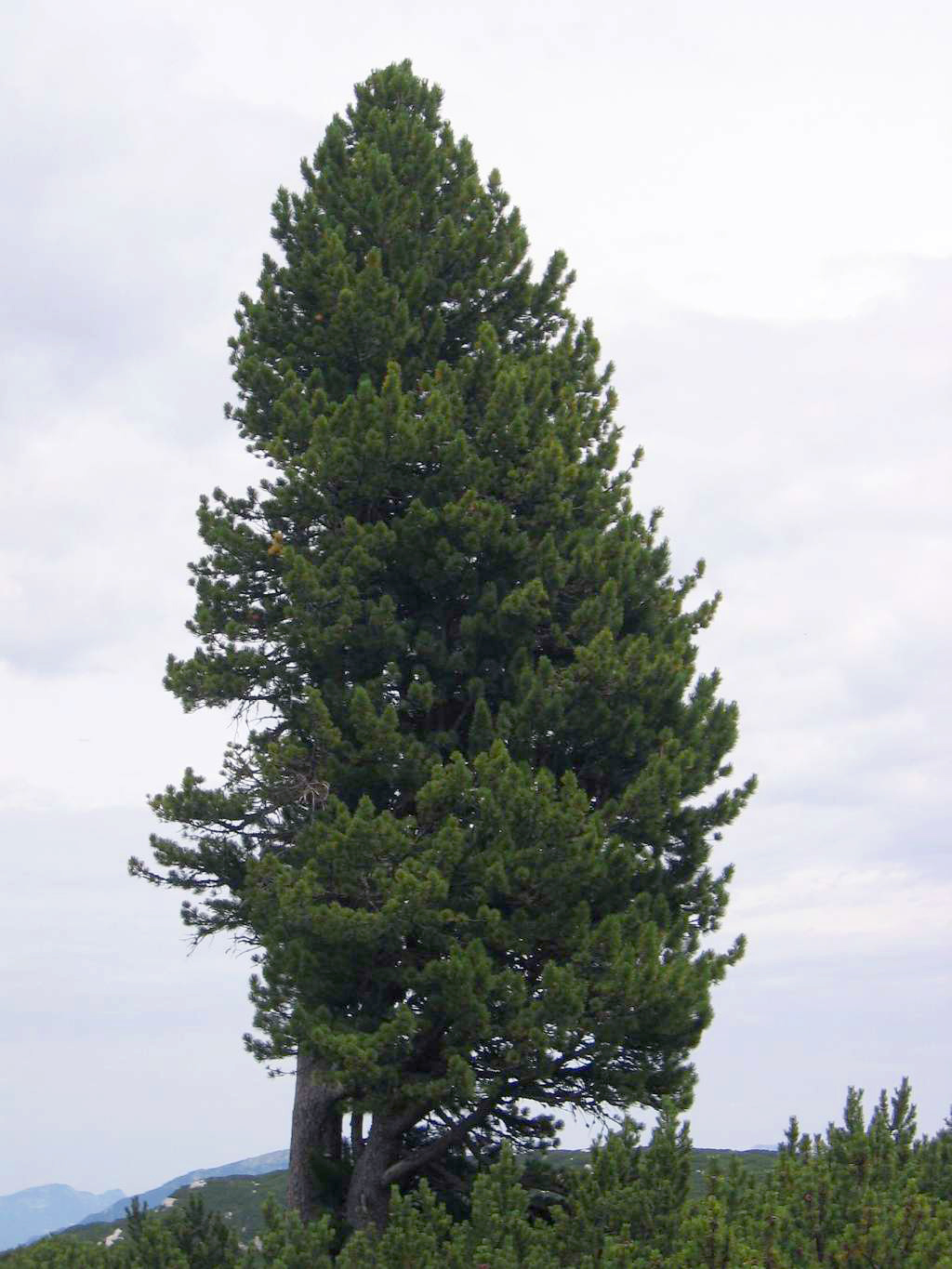- Swiss Pine
Taxobox
name = Swiss Pine
status = LR/lc | status_system = IUCN2.3

image_width = 240px
image_caption = Swiss Pine growing on the Dachstein,Austria
regnum =Plant ae
divisio =Pinophyta
classis = Pinopsida
ordo =Pinales
familia =Pinaceae
genus = "Pinus"
subgenus = "Strobus"
species = "P. cembra"
binomial = "Pinus cembra"
binomial_authority = L.The Swiss Pine or Arolla Pine ("Pinus cembra") is a species of
pine tree that occurs in theAlps andCarpathian Mountains of centralEurope , inPoland (Tatra Mountains ), Switzerland,France ,Italy ,Austria ,Germany ,Slovenia ,Slovakia ,Ukraine andRomania . It typically grows at (1,200-) 1,500-2,200 (-2,300) m altitude. It often reaches the alpine tree line in this area. The mature size is up to 25-35 m height, and 1.5 m trunk diameter.It is a member of the white pine group, "Pinus" subgenus "Strobus", and like all members of that group, the leaves ('needles') are in fascicles (bundles) of five, with a deciduous sheath. They are 5-9 cm long. Swiss Pine cones are 4-8 cm long. The 8-12 mm long
seed s have only a vestigial wing and are dispersed bySpotted Nutcracker s.The very similar
Siberian Pine ("Pinus sibirica") is treated as a variety or subspecies of Swiss Pine by some botanists. It differs in having slightly larger cones, and needles with threeresin canals instead of two in Swiss Pine.Like other European and
Asia n white pines, Swiss Pine is very resistant toWhite Pine Blister Rust ("Cronartium ribicola"). This fungal disease was accidentally introduced fromEurope intoNorth America , where it has caused severe mortality in the American native white pines in many areas, notably the closely relatedWhitebark Pine . Swiss Pine is of great value for research into hybridisation and genetic modification to develop rust resistance in these species.Uses
Swiss Pine is a popular ornamental tree in
park s and largegarden s, giving steady though not fast growth on a wide range of sites where theclimate is cold. It is very tolerant of severe winter cold, hardy down to at least -50°C, and also of wind exposure. The seeds are also harvested and sold aspine nut s and can be used to deliciously flavor schnapps (see Ref. 2).References
*
* [http://zirbengeist.info/ Directions to flavor schnapps (german)]External links
* [http://www.pinetum.org/cones/PNStrobus.htm "Pinus cembra" cone pic (scroll to bottom of page)]
* [http://www.pinetum.org/sp/Aletsch.htm Photos of "Pinus cembra" in Switzerland]
* [http://www.conifers.org/pi/pin/cembra.htm Gymnosperm Database - "Pinus cembra"]
Wikimedia Foundation. 2010.
